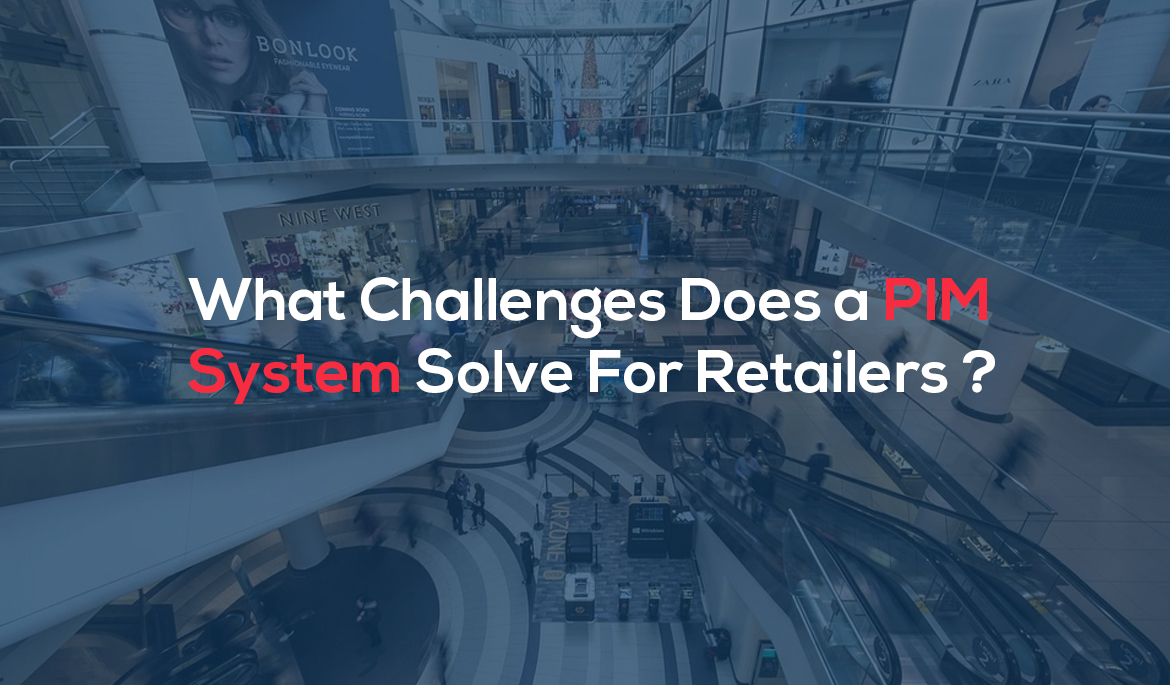In the age of hyperconnectivity and omnichannel sales, consistency is primal. Technology provides new opportunities to connect with customers who increasingly expect a conversational style of interaction across channels. Today, retailers are adopting a more omnichannel kind of approach in order to integrate web and in-store experiences in a seamless way. To make this happen, they must drive more values from product information management initiatives to succeed in delivering unified retail commerce experiences for customers.
75% of buyers are more likely to purchase from brands that offer a personalized buying experience. Here, a product information management (PIM) system plays a crucial role for contextualization and channel-based tailoring of digital commerce experience with improved buying cycle, enhanced brand reputation, and customer loyalty. When harnessed at its full potential, dedicated PIM tools can add value to the entire data lifecycle and help analyze the buyer’s retail journey.
Also Read: Benefits Of Implementing A Product Information Management Solution
Why Do Retailers Need a PIM?
As a retailer, if you face the challenges listed below in managing your product information effectively, then you need a PIM system.
- Are you struggling with scattered and inconsistent product information across various departments and systems?
- How much time and effort are you currently spending on manual data entry, updates, and enrichment processes?
- Are product errors and inaccuracies leading to customer dissatisfaction, increased returns, and lost sales?
- How confident are you in the accuracy and completeness of your product information across different sales channels?
- Are you able to efficiently manage and publish product variations and attributes, such as sizes, colors, and styles?
- How quickly can you introduce new products or update existing ones across all sales channels?
- Are you providing a consistent and unified product experience across your online and offline touchpoints?
- What impact is the lack of comprehensive and rich product information having on your customers’ purchase decisions?
- Do you struggle to export and publish product data in different formats across multiple customer touchpoints, channel partners, suppliers, and agencies with industry-standard data pools?
- Are you stressed to scale your operations and maintain data quality as your product catalog grows?
- How much time and resources are you investing in managing digital assets and ensuring their availability across channels?
How Does a PIM System Resolve Retailers’ Pain Points?
PIM creates a single, trusted source of product information for retailers dealing with long value chains, multiple third-party vendors, and siloed internal/external systems. Ergo, there is no glitch in the information ingested via a chatbot, a social media handle, or even an elaborate email – and the customer switching between mediums does not experience a disconnect. With accurate and up-to-date product information management represented across retail channels, retailers can streamline personalized customer experiences to win their trust.
- Centralizing product information: Retailers often struggle with scattered product data spread across various departments, systems, and formats. This decentralized approach makes it challenging to maintain consistency, accuracy, and accessibility of product information. A PIM system serves as a centralized repository, consolidating all product data into a single source of truth. It allows retailers to streamline and organize their product information, making it easily accessible to all stakeholders.
-
Ensuring data consistency and accuracy: Inaccurate or inconsistent product information can lead to customer confusion, increased returns, and decreased sales. Retailers face the challenge of managing vast amounts of data, including product descriptions, specifications, pricing, images, and more. A PIM system enforces data governance by providing standardized templates and workflows, ensuring consistent formatting, language, and validation rules. It helps retailers maintain data accuracy and integrity, reducing errors and enhancing the customer experience.
-
Streamlining product enrichment and updates: Introducing new products or updating existing ones requires efficient collaboration among multiple teams, such as marketing, sales, and product management. Without a centralized system, this process becomes time-consuming, error-prone, and lacks visibility. A PIM system facilitates collaboration by enabling teams to work concurrently on product information. It provides a structured workflow, automates data enrichment processes, and offers version control, ensuring seamless updates and faster time-to-market.
-
Managing product variations and attributes: Retailers often deal with complex product catalogs that include variations such as sizes, colors, styles, and other attributes. Manually managing these variations across multiple channels becomes labor-intensive and prone to errors. A PIM system allows retailers to define product hierarchies, attributes, and relationships. It enables efficient management of product variations, automates bulk updates, and ensures consistent representation across all sales channels.
-
Enabling omni-channel consistency: Delivering a consistent and unified product experience across various sales channels, such as online stores, marketplaces, mobile apps, and physical stores, is critical for retailers. Without a PIM system, maintaining consistency becomes challenging due to disconnected systems and data silos. A PIM system acts as a central hub for product information, enabling real-time synchronization across all channels. It ensures that customers receive consistent, accurate, and up-to-date product information, regardless of the channel they engage with.
-
Enhancing customer experience: Today’s consumers expect detailed and rich product information to make informed purchase decisions. Retailers need to provide comprehensive product descriptions, specifications, images, and other media assets to engage customers effectively. A PIM system enables retailers to enrich product information with multimedia content, manage digital assets, and publish consistent data across multiple touchpoints. It enhances the overall customer experience, leading to higher customer satisfaction and increased sales.
- Scalability and growth: As retailers expand their product offerings and sales channels, managing product information becomes increasingly complex. Without a robust system in place, scaling operations and maintaining data quality becomes a significant challenge. A PIM system provides scalability by handling large product catalogs and supporting multi-brand, multi-market, and multi-language requirements. It facilitates efficient product onboarding, simplifies catalog management, and supports international expansion.
Driving Factors for PIM Software Adoption
According to Fortune Business Insights, the global product information management market is projected to grow from $3.01 billion in 2022 to $12.91 billion by 2029, at a CAGR of 23.1%.
With the rise of omnichannel retail, where customers expect a seamless shopping experience across different channels (online, mobile, in-store), PIM has become essential. PIM enables retailers to synchronize and distribute product data across all channels consistently.
The adoption of PIM in retail industry has grown due to AI and retail analytics across the e-commerce sector. In the age of reviews, real-time feedback, and social media, streamlined product information can make all the difference. When a customer browses through product listings, they can use any available methods—text search or voice-command search—thus detailed information needs to be conveyed for a text or voice conversation.
The high demand of virtual try-on and customization is another driving factor. AR technology combined with PIM data allows customers to virtually try on products, such as clothing, accessories, or cosmetics. By overlaying the product onto the customer’s image in real-time, they can see how it fits or looks on them before making a purchase. Additionally, AR can enable customization options, allowing buyers to personalize products by changing colors, patterns, or designs. This level of interactivity and customization builds confidence by reducing uncertainty about the final product.
An effective PIM solution is sure to augment the brand presence, increase customer loyalty, boost overall collaboration, and drive revenue. The high adoption of PIM in the retail industry can be attributed to the benefits it brings in terms of centralized data management, omnichannel commerce, time-to-market acceleration, product experience enhancement, scalability, compliance, and cost savings.
What are Top PIM Systems for Retailers
- Pimcore
- Akeneo
- Salsify
- Informatica
- Syndigo (Riversend)
- Stibo
- Inriver PIM
- Contentserv
- Agility Multichannel
- Plytix, and many more…
Each PIM system comes with its pros and cons. You should consider based on your exact business requirements. Many PIM systems do not come out-of-the-box, so the customization and implementation factors should also be considered while making the final call. Know Top 9 Product Information Management (PIM) Software Solution To Integrate Your Product Data
In Conclusion
Cohesive and comprehensive product information management enables retailers to acquire new customers, increase customer lifetime value (CLV), create omnichannel experiences, and efficiently collaborate with different stakeholders. It can even help save time from data micromanagement and automate several manual data recording functions so that retailers have overall control of the business. From a holistic point of view, better business outcomes can be achieved with better product data management.
Download a FREE copy of eBook: Product Catalog Management- Discover the Importance, Conquer the Challenges, and Transform Your Catalog with Automation

